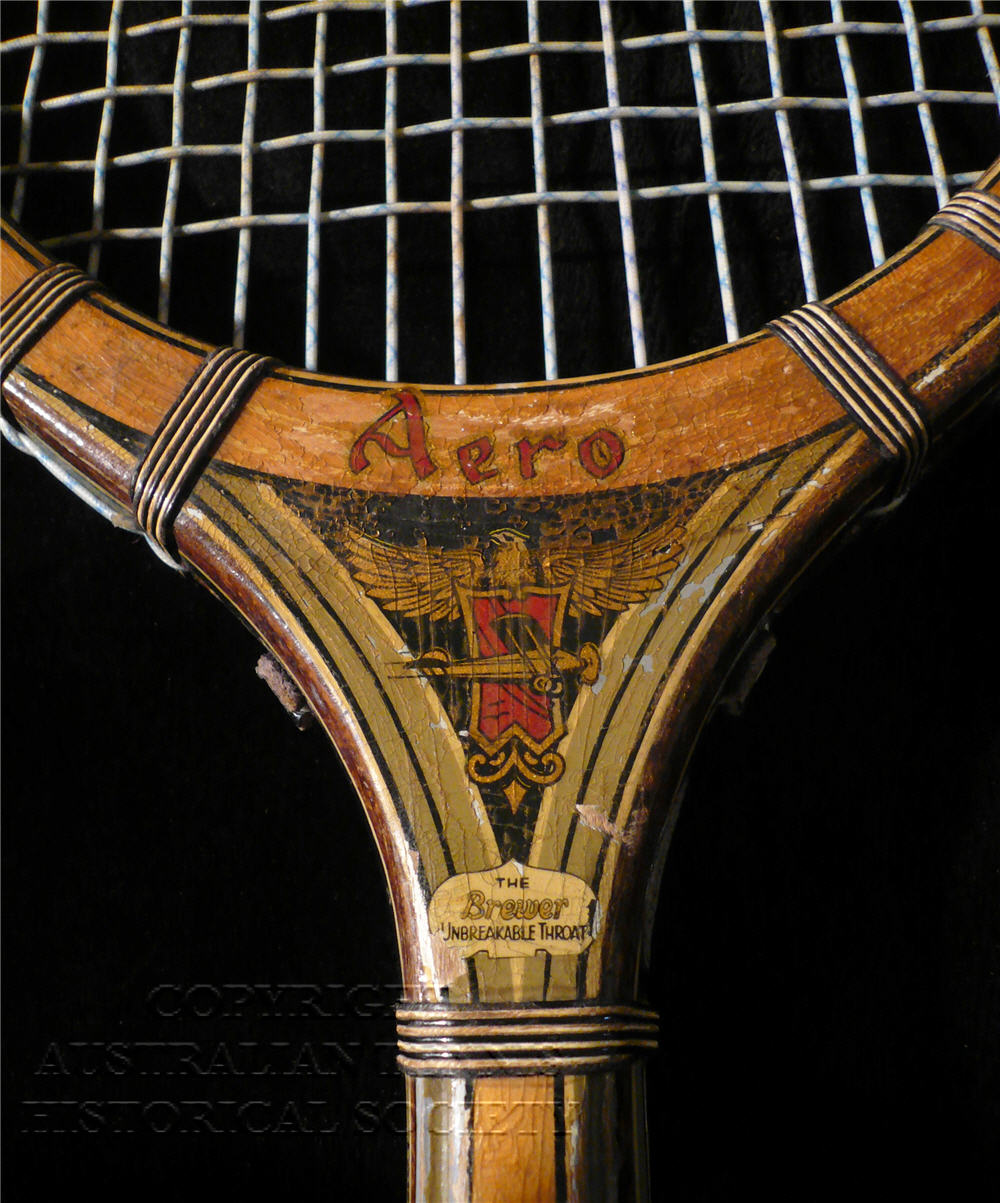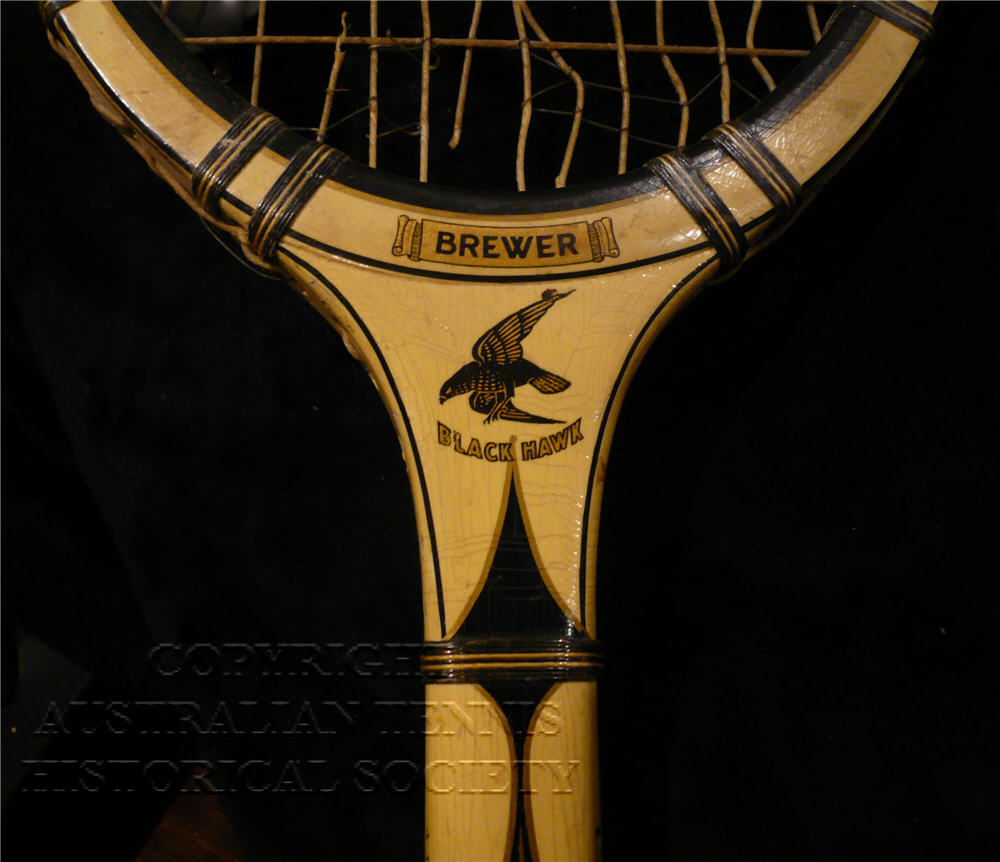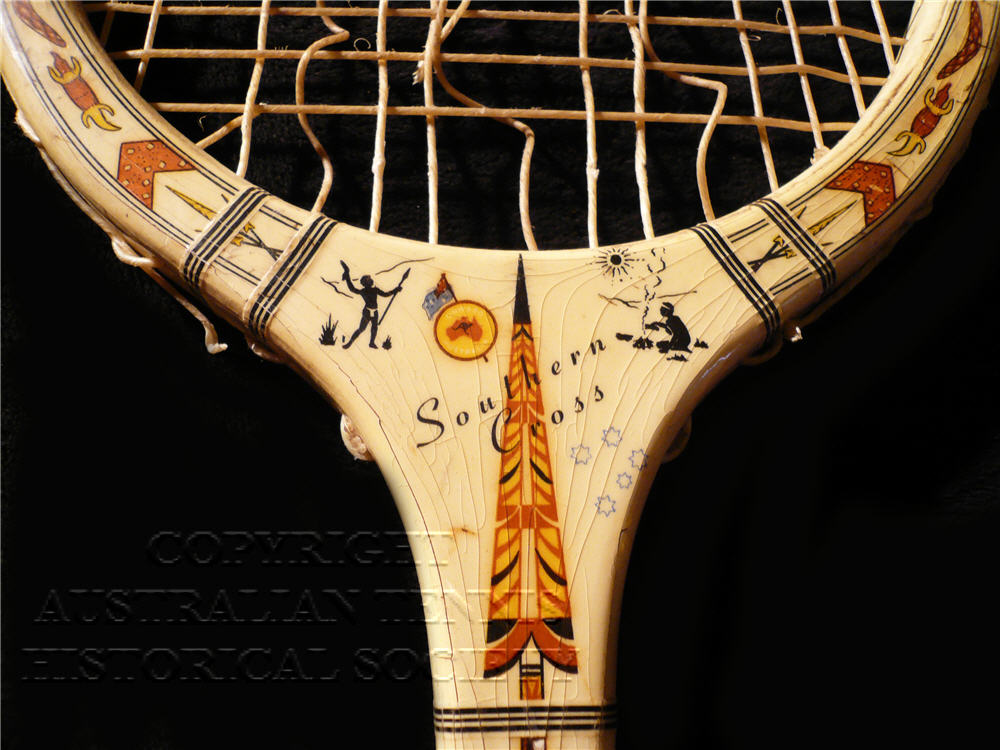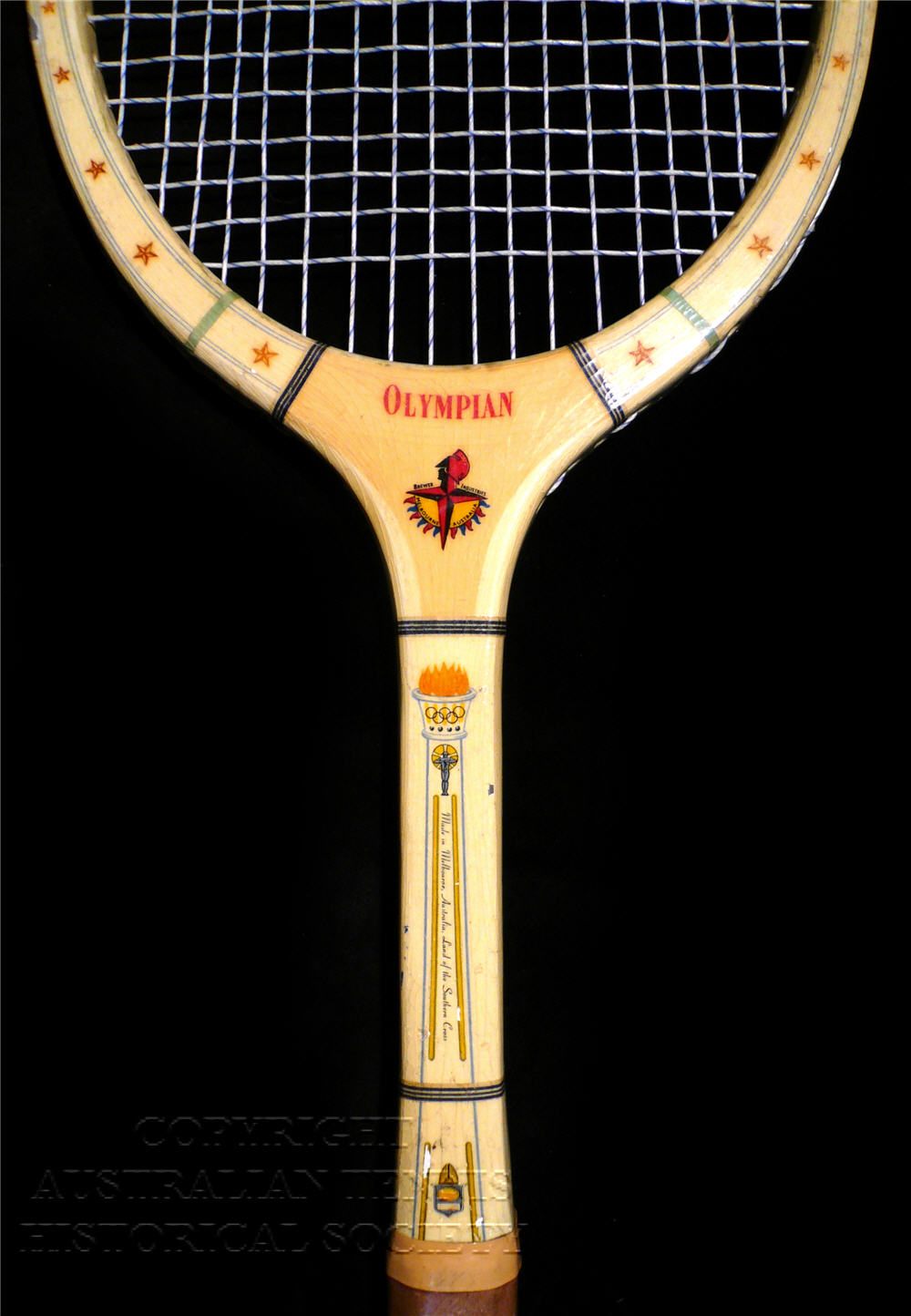
Born in Bendigo in 1905, Albert Brewer came to Melbourne in 1920 to commence work as a furniture factory machinist at Rojos Pty.Ltd. in Little Lonsdale Street Melbourne. With skills developed in moulding timber, he gained twelve months experience in crafting tennis racquets at AG Spalding, then in 1928 bought his own factory in Farm Street, Newport, Victoria. Little did they know that they would soon have a competitor in tennis. Note the telegram address is for Baseball which was Spalding’s primary industry and one which they tried to promote in Australia. Bert began making the signature brand, the Brewer ‘Style Leader’ range of racquets and built up a great export business in an era when Australian manufacturers dominated the equipment market and Australian players dominated the tournaments. This is a 1934 Ad from a retail store in Tasmania.  While the export market did well the home market was much more difficult as all other manufacturers formed a cartel (completely legal in those days, before the Trade Practices Act) and prices were fixed. This was completely contrary to Albert Brewer’s principles and he refused to sign the agreement. Hence, the Brewer range of racquets were banned from sale in all stores that made up the Combined Sporting Goods Association. Read more about this under the retailing racquets section.
While the export market did well the home market was much more difficult as all other manufacturers formed a cartel (completely legal in those days, before the Trade Practices Act) and prices were fixed. This was completely contrary to Albert Brewer’s principles and he refused to sign the agreement. Hence, the Brewer range of racquets were banned from sale in all stores that made up the Combined Sporting Goods Association. Read more about this under the retailing racquets section.


 Not quite the sporting gesture, promoting off a players defeat!
Not quite the sporting gesture, promoting off a players defeat!
To maintain sales, the answer lay in the purchase of his own retail sporting goods outlet – Alcock and Pierce – in Elizabeth Street Melbourne, which became a well regarded store selling a variety of brands over a number of sports and this store exists today but has no connection to tennis. The war years played havoc with the business as the factory ceased all manufacturing of tennis racquets as part of the war effort and made parts for the Beaufort Fighter aircraft. The factory was well placed to carry out this role as this plane used many moulded timber parts. However it cost very dearly as many of the Brewer racquet contracts were lost. After the war the factory gradually returned to manufacturing racquets. The process involved a great deal of hand labour and most of the machinery was made on site. The Brewer racquet was the only Australian racquet which began with the original Canadian Ash logs arriving at the factory, then sawn into planks, then sawn into laminations. You can see from marketing material and on the racquets themselves that the ‘made from logs’ point of difference was used as a selling feature. Manufacturing racquets involves many individual procedures one of these, the spraying of lacquer to finish the racquet, was a highly flammable job and twice in the history of the business it was the cause of devastating fires which burnt the factory down. Both times there was no insurance coverage, and Albert Brewer had to start again – and both times without the help of a bank loan. But as a testament to his independence the factory always started again. He rebuilt the factories on a hectare of land in Mitcham and the last racquets were made in 1970. However, by this stage the frames were made by Kawasaki in Japan and were finished in Mitcham. Albert Brewer died after a long illness in 1975, and because of no legal/accounting tax minimization in place, the plant and the factories had to be sold to with the large proportion of the proceeds being taken by the government in the form of death duty (abolished in 1976). The family business continues in the name of Alcock and Pierce, owned by Robert Brewer and Elmae Brewer, the son and daughter of Albert Brewer, and is managed by Tim Brewer, Albert’s grandson. A special thanks to Robert and family for the story and shots used here.
After the war the factory gradually returned to manufacturing racquets. The process involved a great deal of hand labour and most of the machinery was made on site. The Brewer racquet was the only Australian racquet which began with the original Canadian Ash logs arriving at the factory, then sawn into planks, then sawn into laminations. You can see from marketing material and on the racquets themselves that the ‘made from logs’ point of difference was used as a selling feature. Manufacturing racquets involves many individual procedures one of these, the spraying of lacquer to finish the racquet, was a highly flammable job and twice in the history of the business it was the cause of devastating fires which burnt the factory down. Both times there was no insurance coverage, and Albert Brewer had to start again – and both times without the help of a bank loan. But as a testament to his independence the factory always started again. He rebuilt the factories on a hectare of land in Mitcham and the last racquets were made in 1970. However, by this stage the frames were made by Kawasaki in Japan and were finished in Mitcham. Albert Brewer died after a long illness in 1975, and because of no legal/accounting tax minimization in place, the plant and the factories had to be sold to with the large proportion of the proceeds being taken by the government in the form of death duty (abolished in 1976). The family business continues in the name of Alcock and Pierce, owned by Robert Brewer and Elmae Brewer, the son and daughter of Albert Brewer, and is managed by Tim Brewer, Albert’s grandson. A special thanks to Robert and family for the story and shots used here.




Also from Newport. Note the design has St Kilda and Collingwood Colours. Not sure of any football reference c late 1930′s given shape and cord wrappings.
 The Style Leader Diamond Strung model was mentioned as being the most expensive racquet on the Australian market in 1936 at 82/6
The Style Leader Diamond Strung model was mentioned as being the most expensive racquet on the Australian market in 1936 at 82/6
Brewer Black Hawk 1934 as per ad top right

Brewer Style Leader

Brewer Black Hawk



The above photos are of the Brewer Kookaburra from a racquet sold in the USA. Excellent decal treatment. Sorry that one of the photos is a little blurry. Thanks to the US owner who sent them to us.
The above photos are of the Brewer Southern Cross which is the only ‘imitation’ art depicting Aboriginal heritage on a tennis racquet that we are aware of.
The Olympian was a model used in the mid 1930′s but we feel this model was a 1950′s version leading up to the Melbourne Olympic games in 1956.










You must log in to post a comment.